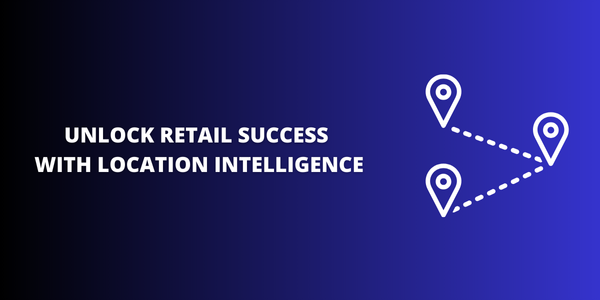
Key Takeaways
Imagine walking into a store where the shelves are stocked with exactly what you want, and the layout feels like it was designed just for you. This isn't magic; it's the power of location intelligence.
Location intelligence is the art of using data to understand where people are, what they want, and how they shop. It's like having a crystal ball that can predict the future of your business, one customer at a time.
From optimizing store layouts to enhancing online experiences, location intelligence is the secret sauce that's helping retailers stay ahead of the curve.
Location Intelligence: A Quick Overview
Think of location intelligence as a super-powered detective that helps businesses solve the mystery of their customers. It's like having a crystal ball that can see where people are and what they want.
Why is it important?
Location intelligence is like a superpower for businesses because:
Impact of Location Intelligence on Retail Strategy
Location intelligence is transforming retail strategies by offering precise data on foot traffic patterns, customer behavior, and regional demand. With real-time insights, retailers can make informed decisions about store layout, inventory management, and site selection, optimizing operations for both profitability and customer satisfaction.
Additionally, integrating location data into omnichannel marketing helps bridge the gap between online and physical shopping, creating a seamless customer experience.
Data-Driven Store Layout and Design: How traffic patterns influence store optimization
One of the key factors in store optimization is understanding customer traffic patterns. By analyzing data such as foot traffic, dwell time, and product interactions, retailers can identify high-traffic areas and areas with low customer engagement. This information can be used to:
Leveraging Heat Maps
Heat maps are a valuable tool for visualizing customer traffic patterns within a store. By overlaying heat maps with store layouts, retailers can identify areas with high customer concentration and areas with low engagement. This information can be used to:
Using Customer Analytics
Customer analytics can provide valuable insights into customer behavior and preferences. By analyzing data such as customer demographics, purchase history, and in-store behavior, retailers can customize store layouts, optimize product assortment. Also, they can provide a more personalized shopping experience.
Omnichannel Integration: Bridging the gap between online and offline customer experiences using location data
Location data can be used to provide customers with personalized product recommendations based on their in-store behavior and online browsing history.
For example, a retailer can use location data to identify products that a customer has viewed online and recommend similar products in their nearest store. This can enhance the customer experience by making it easier for them to find the products they're looking for.
Enabling Click-and-Collect Services
Location data is essential for enabling click-and-collect services, which allow customers to order products online and pick them up at a nearby store.
By using location data, retailers can provide customers with accurate estimates of pickup times and optimize their store operations to ensure that orders are ready for collection when customers arrive. This can improve customer satisfaction and reduce the likelihood of abandoned orders.
Optimizing Store Locations
Location intelligence can also be used to optimize the location of physical stores. By analyzing customer location data, retailers can identify areas with high customer concentration and low competition. This information can be used to determine the best locations for new stores or to optimize the performance of existing stores.
Integrating Online and Offline Loyalty Programs
Location intelligence can be used to integrate online and offline loyalty programs. By linking customers' online and in-store accounts, retailers can provide customers with a unified loyalty experience that rewards them for their purchases across all channels. This can encourage customers to shop both online and in-store, increasing customer lifetime value.
Competitive Edge: Using intelligence to outperform competitors in high-demand areas
Location intelligence gives retailers a strategic advantage by:
By leveraging location intelligence, retailers can make data-driven decisions to outperform competitors and capture a larger market share.
Challenges and Considerations
While location intelligence offers immense potential, it comes with its own set of challenges. Ensuring data privacy and ethics is paramount. Businesses must handle customer data responsibly, obtaining clear consent and implementing robust security measures to protect sensitive information.
The accuracy of location data is another critical factor. Verifying data from multiple sources and using advanced data cleaning techniques is essential to ensure reliable insights. Integrating location data into existing business systems can also be complex.
Retailers need to invest in the necessary technology and expertise to seamlessly integrate location data into their workflows and extract maximum value.

